Navantia UK’s new chief executive, Donato Martinez, spoke to me and other journalists about strategy following the firm’s acquisition of Harland & Wolff’s Belfast yard and the award of the Fleet Solid Support (FSS) contract.
Martinez said Navantia UK was created off the back of the FSS programme, but is now building itself into a broader industrial player with four business units: Belfast, Appledore, Methil and Arnish.
“Belfast is going to be our large and main shipyard in Navantia UK, building the largest ships for the company with a clear focus on defence needs,” he explained, adding that Appledore would act as a hub for medium-sized ships and exports, while Methil and Arnish would focus primarily on renewables but could support defence programmes.
Asked to set out the next milestones for FSS and whether there had been serious issues taking over Belfast, Martinez acknowledged the scale of the challenge. “Because of the financial situation [prior to takeover], a lot of preparation to get ready was not progressing as expected. A huge personal effort was required to novate contracts, work with suppliers, put training plans in place and deploy new IT systems. The good thing is Navantia brings knowledge on how to get those things done.”
He confirmed that design work had continued smoothly and said the programme is now on firmer ground: “We are sticking to the key milestones in the short term. The next milestone review is in October, and everything is going to plan. Materials are being procured, steel is being delivered, and we are collaborating with UK suppliers. The aim is to be fully ready when big production work starts next year.”
Looking further ahead, he said continuity of work would be vital for Belfast: “We need to provide volume to any company. The next thing for Belfast is obviously the multi-role support ship capability. We are planning to concurrently work on FSS and that programme so that we can provide a stable road in the years ahead.”
Martinez also highlighted Navantia’s heavy focus on innovation and investment. “We invest more than 10% in research and development every year. The 5.0 concept is about how to get ships faster to the customer, with process re-engineering, new machines and new robots in shipyards. There is a first round of £115 million investment, and there will be a second and third to put all that model in place in the UK.”
On collaboration with other yards, he said Navantia UK was ready to support BAE Systems or Babcock if they required extra capacity on Type 26 or other programmes: “If they need help, we need help. That is our obligation to support them, and vice versa.” He also backed proposals for greater cooperation across the shipbuilding sector: “I think it’s the most sensible approach. The expectation is so high that we need to collaborate. Sometimes you need to recognise that smaller shipyards are better at certain things, so you must engage them.”
Martinez was clear that Navantia UK intends to build up its own design capability. “The only way of making sure that you are really efficient is to control the design. You can reduce the number of materials, reduce the number of hours, and be liable for penalties if you don’t deliver. It doesn’t mean we’ll do everything alone—we believe in partnership—but we must develop our own design capability here in the UK.”
He concluded by linking Navantia UK’s plans to wider UK defence policy: “Sometimes timing just happens to be good. The Strategic Defence Review and the Defence Industrial Strategy align very well with what we set out from January. Our focus is on relentless commitment to delivery, investment in people and apprenticeships, and innovation to ensure the Royal Navy gets capabilities faster and more efficiently.”



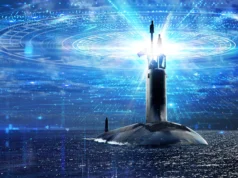

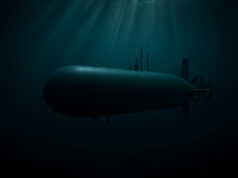

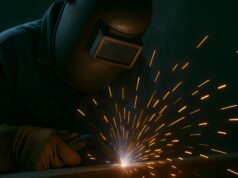


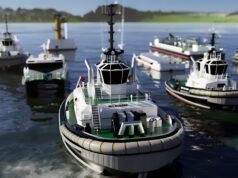
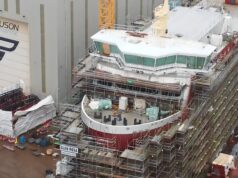


A whole lot of talk going into Shipbuilding around the UK, either its a corporate pipe-dream or BAE, H&W and Babcock have had some very strong signs from HMG that the RN is going to be undergoing a pretty substancial expansion over the next 10-20 years.
Also responding to commercial signals from customers
T26 build – Norway and maybe others
T26 design and major components exported – Canada and Australia
T31 build to export – Denmark and maybe Sweden and maybe others
T31 design and major components exported – Poland and Indonesia
AUSUK – Australia
As I said on NL there must have been some letters of comfort flying around as well as some sharing of advance pipeline with the yards. Although, given how yellow politicians are about defence I wouldn’t take anything that wasn’t monetisable.
The only good thing about this current government is that they do see regenerating shipbuilding as being worthwhile as an end in itself. Spending money on RN is supported by all the major parties so it doesn’t really get much flak. Shipbuilding unions are happy as they are getting lots more members with stable long term job – if they can keep the Trots out of control…..
The RAF also appears to have at least some advocates w/in HMG/MoD/MIC. The BA? Ummm…er…ummm…🤔😳🙄😉
Current government?
If there are to be two missile ships for every T26 that’s another 16 missile ships. These will have to be big to survive the North Atlantic, fast to avoid constaining their parent frigate, have a good range to not overburden the oilers. Carrying many millions of quid’s worth in missiles, they won’t be attritable, so you can expect a significant amount of milspec and some complex damage/fire limitation hardware. I think knocking out the first one in two years, as the 1SL suggested, is unlikely, but they could be a spirally developed from a cheap and cheerful version.
I can’t see it happening myself, but 1SL already has something in mind if he put such a tight timescale on it.
Hi Jon,
I agree with you, some kind of spiral development is the most likely way to get the ball rolling. Even a relatively simple vessel could be useful to start develop fleet operational experience, doctrine and standard operating procedures. Given the severe lack of mass that we have we need to get on with this. I read an article on here recently about a training course for FPV drones in the infantry. A Colour Sergent said he wasn’t convinced by them until they saw what was going on in Ukraine and then got his hands on them. So we need to get this technology into service soonest so that the services can see how useful these can be and feedback to the manufactures.
For the RN there are challenges in terms of controlling and directing these as in certain circumstances it would be very useful be be able to put drones up range of the threat, but that brings line of sight issues. If you want or need to have human input into the engagement decision process or want to transfer lots of data, signal bandwidth and security get hard to achieve as you get line of sight communication range. You could do it with aerial communication drones but they may be limited by weather conditions, especially in the North Atlantic. Satellites are the most likely short term solution but we know Russia has been testing anti-sat weapons and may not be adverse to risking that cascade effect that has been talked about regarding orbiting junk.
So given the potential complexities of ultimately bringing high end surface escort drones into service at some point the first step might be either an arsenal ship loaded with missiles that stay reasonably close to the directing frigate or destroyer or something with say a proven autonomous gun system a la Phalanx or directed energy weapon.
In terms, of sensors a light weight towed array being used in an intelligence gathering role distant from the frigate might be an option, but it would be vulnerable to an air launched missile strike or being boarded…
Lots of unanswered and challenging questions.
My concern, is that these will be seen as a cheap alternative to more crewed frigates and destroyers. They are not as I think they will need local command nodes to operate successfully in a hostile environment, especially if low earth orbit communications networks are used and engaged by the likes of Russia.
No matter which way yo cut it we will need a much bigger navy with a mix of crewed and uncrewed vehicles with some of the latter being tied to crewed ships and others, most likely intelligence gathering types to start with, being able to operate autonomously.
Cheers CR
Well if that isn’t a direct sign that Navantia are here to stay and shake up the status quo I don’t know what is. I can’t say I’m surprised as Spain just isn’t spending enough to support NAVANTIA and direct exports aren’t going too well.
As he says after FSS they have their sights firmly focused on the MRSS contract and they just happen to own the largest building dock and Drydock in the UK. And they have their own very experienced design bureau to back them up, so just watch them set up a U.K based satellite design office and then submit their own concept for MRSS.
Anyone doubting that has to remember they have designed and built their own LPDs and LPH for the Spanish Navy, Australia and as design consultant for Turkey (TCG Andadolu).
Anyone interested in some of their ideas just have a read up on NAVANTIA SMARTShips which is their latest ideas on designs from Frigates, Destroyers and Amphibious ships.
If they also get the QE support contract (which would make massive sense) and the MRSS contract, BAe and Babcock may rue the day they didn’t buy H&W.
The irony of this is that NAVANTIA has its modern origins in one of BAe’s predecessors namely VICKERS, they took over running Spain’s Government owned shipbuilding industry pre WW1 took a majority share and modernised it so that Spain could build British designs full of British armament and equipment.
What goes around comes around !
Three very competent and competitive warship builders with three large modern yards.. who would have thought it 10 years ago.
What is interesting is this regeneration actually has its genesis in the complete neglect of the RN and the utter lack of recapitalisation between 2005 and 2015 it left such a backlog that instead of the usual inefficient ticking along HMG had to order a lot of ships in one go and delivered in a short time this mean that to fulfill the order shipbuilding needed to modernise ( 2 undercover frigate factories essential with the capability to knock out a frigate each a year at full speed is seriously massive investment). This would have lead to a massive boom bust but for a couple of happy co-incidences
1) loads of other western nations had also neglected their naval shipbuilding. Essentially the US which cannot even support its own demands
2) China suddenly turned into a maritime superpower and naval avalanche
3) Russian turned into the evil empire and started invading anyone near it who did not bow and kiss the ring
These three things have lead to a massive increase in need for a good frigate builder.. just at the point the UK built 2 top of the range frigate building yards that covered the need from top end destroyer to bottom end patrol frigate.
But in reality it all came from neglect and then the panic from the rise of China and rebirth of Russia.
You are not wrong ! When you just look at a European Map a lot of what is happening right now makes perfect sense. Netherlands, Belgium, Norway and Denmark all gave up building their own major warships 20 years ago and given the Ukrainian issue building cheap hulls in Romania isn’t such an inviting idea anymore. As for Germany if you set aside Submarines they are now pretty well a basket case of failures as far as naval shipbuilding is concerned (most of their recent ships are large, under armed targets that will be a liability in a pear to pear war). Which pretty well leaves the UK in a rather interesting position, we have re invigorated our industry and are building vessels well suited to Northern European waters. They may not be fancy but they will be robust, do the job and have a fair amount of flexibility built in.
Indeed, essentially the US is out the game as well.. with its hyper expensive shipyards that cannot design a modest export frigate if their lives depended on it.
Infact the only real players in town are the French Italians and British..
And the Norway deal shows the advantage of having lots of hull being built, essentially it’s how the Norway order could be fulfilled avg how Italy got its orders.. a lesson for government. Always keep the orders flowing abc keals being laid down as that will naturally bring in export orders.
TBH Jonathan the US is its own worst enemy, and the biggest issue is Pork Belly Politics. The President / Sec of War agree an annual budget, it gets divided up between the services who then put in requests for the kit / numbers they require. Then the entire table gets upended as it goes to the Hill for approval. They jiggle the numbers, cut programmes and add things that no one asked for and mainly due to their own / constituency self interests.
On the other hand every now and then they just scratch their heads and over rule the Military to add something really useful because they see a value the Defence Chiefs don’t.
Fact is the US has designed and built a very good, reliable and flexible Frigate which was designed from scratch with space for extra weapons, congress liked it and added more than the service chiefs asked for (8 now up to 12).
Only problem actually ordering a Frigate based on a USCG Cutter wouldn’t be grand enough they actually turned Down a version of it in favour of the Constellation Class.
“Infact the only real players in town are the French Italians and British..”
Navantia’s exports can’t be ignored either. The F-100 series has been exported to two countries (Australia and Norway, the later was a smaller design but still based on the ship), LHD to two countries, various corvettes to Morocco, Saudi Arabia, Venezuela, etc and the recently launched F-110, perhaps the most advanced ASW frigate, which has great export potential and Navantia is already preparing export campaigns.
Good point, I forgot about the Spanish sneaking in.
That’s an interesting tidbit, I didn’t know that! I don’t think it’s a bad thing to have Navantia on board, someone needs to do the hard work of modernising H&W- which I suspect is a rather archaic place with a lot of people set in their ways. It’s also a good way to fire up a bit of competition and improve productivity across the sector; I don’t mind unions, but if there’s an imperative that work be done more efficiently/effectively or the job is lost completely then some of the excesses that can come with them can be better managed.
It’s also an interesting return to the days when we had multiple businesses in defence, rather than one or two giant amalgams that could look after us and sort everything we needed.
I also note that their model for the different yards is broadly what it was before H&W actually collapsed- which suggests that the approach at least was sound. Maybe management practices and capital or cashflow were the problem…
In general terms with the uptick in volume and pace of Naval shipbuilding in the UK, Defence companies and HMG will need to ensure that security against threats from both within and without is substantially upgraded. Recent incidents within Defence establishments have highlighted this problem. It only takes a small number of saboteurs, either onboard existing ships or in shipyards to cause huge damage. Even with careful screening and ongoing surveillance this is going to be a difficult but urgent task.
Very much so, Geoff.
Morning Daniele. The world has become a scary place. It would seem that Putin really is spoiling for a fight with Nato and yet on paper, he is outgunned by the alliance in most departments and more importantly, would the Russian people have any enthusiasm for the opening of another front with a much larger adversary, when they are bleeding so profusely from the Ukranian conflict? It is a frightening but stark reality that the future of this whole planet of 8 Billion humans could lie in the hands of a couple of little men-Putin, and to a lesser extent, Kim Jong Un! The possibility is that an increasingly bold Putin nearing the end of his life, might feel that he wants to leave with a BIG bang both literally and figuratively. All the talk and activity of re-arming in the West leaves us in a place where many are now thinking it is inevitable.
What I find interesting is that they have identified appledore as a focused medium sized warship builder, I think appledore can manage 100m ships in its covered yard.
This is exciting because look what the navy is looking for 2 smaller essentials unmanned/lean manned corvettes to pair with each type 26 as will as arsenal ships to pair with each type 83.. that’s a minimum of 22 smaller warships over the next couple of decades.
So I think we will sea appledore become a large hub for warship building..
This would be logical as it spreads the development into the south of England as well.
The autonomous fleet may even give Portsmouth a renaissance if BAE decides it needs a yard for that work.
Appledore managed to damage two of the Irish P60s due to letting them sit on the mud every low tide, unless they plan massive upgrades to the fit out area it’s hard to see them doing actual warship work.
Hi mark I have never heard of this I’m afraid, appledore has a good deep water dock as a fit out area.
As the Irish government even extended the contract with an extra OPV so they must have been happy.
Do you have the reference for the event so I can have a read?
As I recall, they were out of the hall and tied to the wall. I guess you know all about the Torridge and Taw Silt problem, not to mention the sand bar.
Interestingly, A look on Google maps shows what looks like a Mine Sweeper tied against the wall now, in the very same place. You can see it from the Parade road too and from the old Signal Box.
Next time I’m that way I will have to have a look see.
Sorry for the delay in getting back to you, while the hulls were built in the roofed dock, that’s too low for the mast to be fitted so the hulls were towed out to the quay wall where the minesweeper is currently, but that’s tidal so each one ended up sitting in the mud and one of them got hit by Winter storms while in that position. Two of the hulls were delayed and had shaft damage/misalignment from that.
As to the extra order, that was a bit of “slight of hands” politics that was unplanned, with Babcock offering a long term payment plan just to get another hull to keep the yard going.
I know they built the Scott at the yard but I think she had to be built at an angle across the covered dock to fit, so there are limits there as well.
Cheers mark I had not heard the story of the damage to the patrol boats. Very interesting.